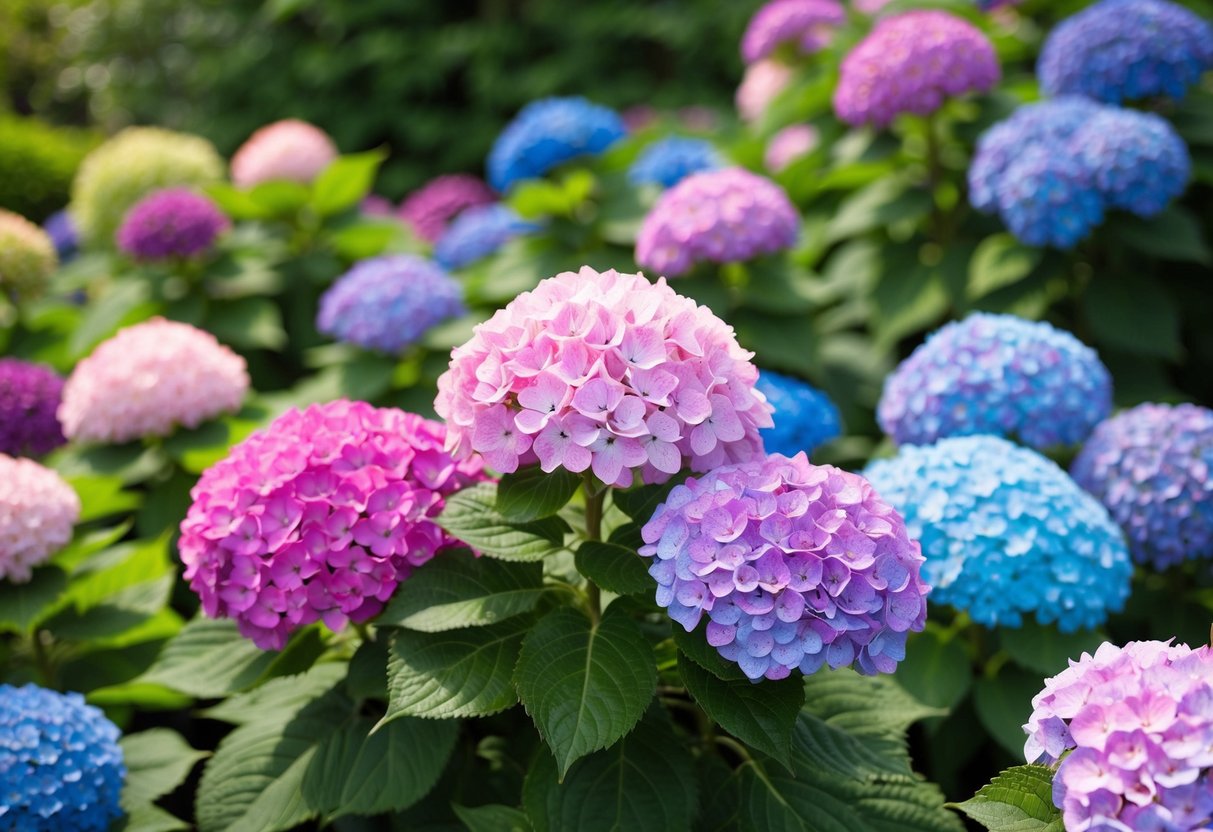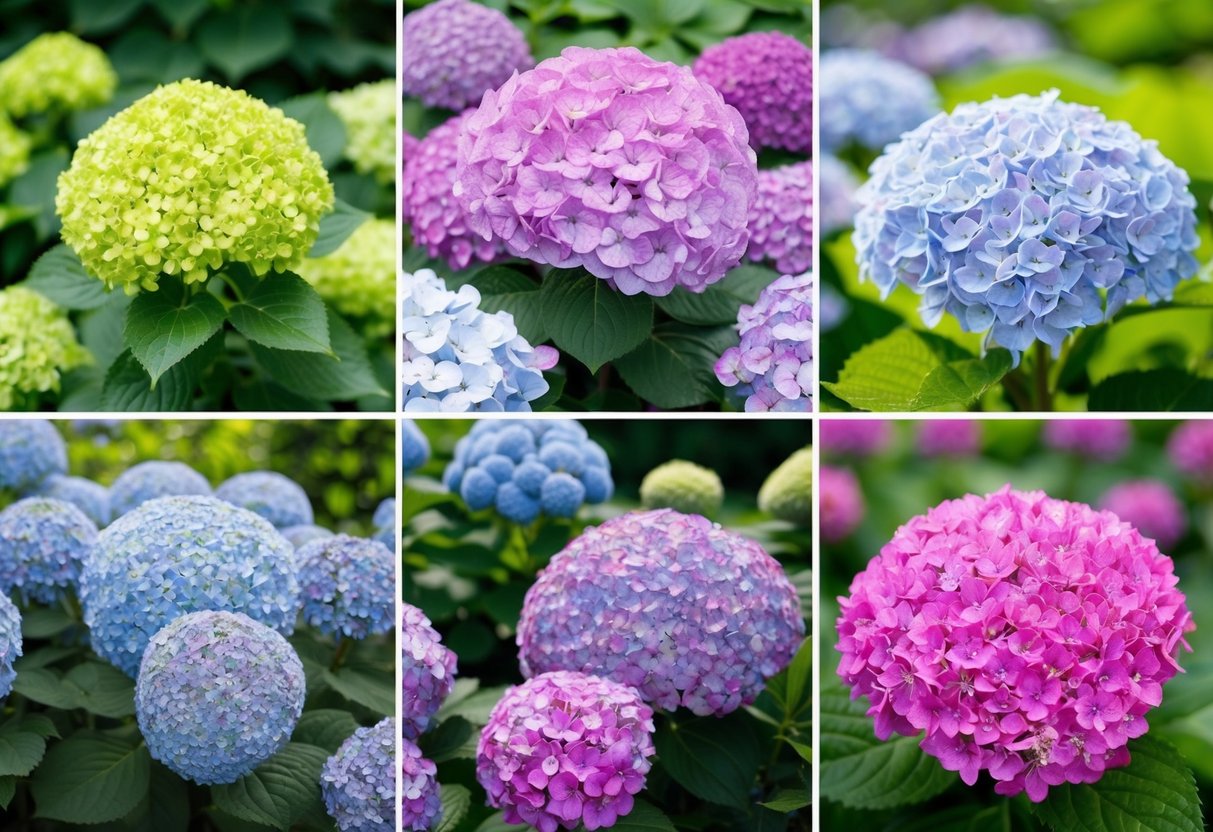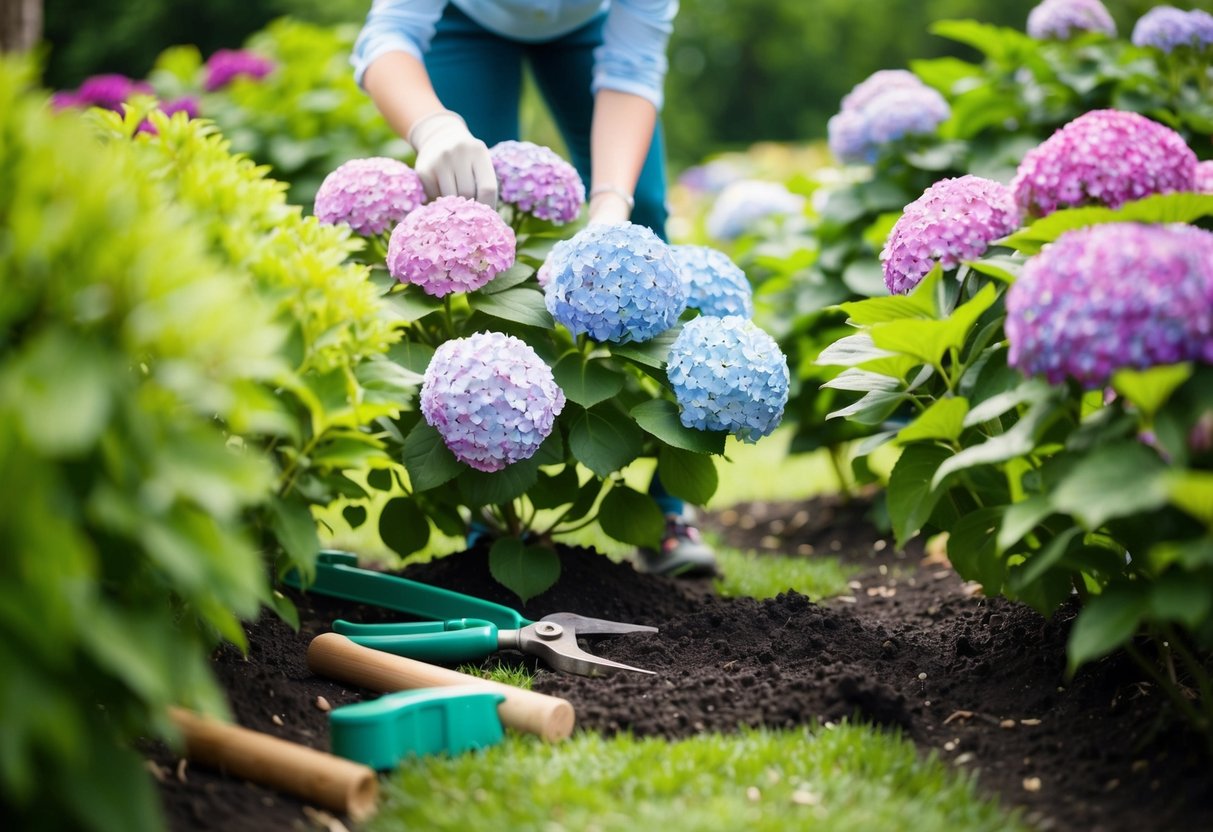Do Hydrangeas Change Color Every Year? Understanding Annual Shifts
Ever wondered why your hydrangeas seem to change colors with the seasons? Hydrangeas can indeed change color based on the pH level of the soil they’re planted in. This fascinating ability allows them to showcase a variety of hues, giving your garden a fresh look each year.

If your soil is acidic, your hydrangeas might display vibrant blue or lavender tones. These hues are particularly striking and can create a cool, calming effect in your garden. On the other hand, when the soil is more alkaline, your hydrangeas could turn pink or even red, which can add warmth and depth to your outdoor space.
If you’re interested in experimenting with your hydrangea colors, consider adjusting your soil’s pH. Simple amendments can lead to a stunning transformation in bloom color, keeping your garden looking exciting and new year after year.
Understanding Hydrangea Types

Understanding the different types of hydrangeas is crucial for any gardener looking to master the art of color change in these beautiful plants. Read on to learn more about the characteristics that make each type unique, including their bloom styles and care needs.
Bigleaf Hydrangeas
Bigleaf hydrangeas, also known as Hydrangea macrophylla, are perhaps the most popular variety. They are famous for their large flower clusters, which can be mophead or lacecap. These hydrangeas are unique because they bloom on old wood. This means that the buds for the following season’s flowers develop during the current growing season.
The soil’s pH level influences their color. Acidic soils (pH 5.5 or lower) typically produce vibrant blue or purple flowers, while more alkaline soils result in pink blooms. If you’re interested in changing your hydrangea’s color, adjusting the soil pH through additives can help. Learn more here.
Mountain Hydrangeas
Mountain hydrangeas, or Hydrangea serrata, are similar to bigleaf hydrangeas but have their own distinctive features. Native to the mountainous regions of Japan, they are typically more compact and cold hardy.
These hydrangeas often display lacecap flowers, which are flat with a ring of larger flowers around smaller central blooms. Like bigleaf hydrangeas, their flower color can also change depending on soil pH. They are also more tolerant of shade and are well-suited for cooler climates. This makes them a versatile choice for gardeners looking to add variety to their landscape.
Other Hydrangea Varieties
Apart from bigleaf and mountain hydrangeas, there are several other varieties worth noting. Each has its own unique charm and care needs. For instance, the smooth hydrangea is known for its round, snowball-like blooms, while panicle hydrangeas have cone-shaped flowers.
These varieties usually bloom on new wood, which means their buds form and flowers appear within the same growing season. This feature often results in more consistent blooming each year. Unlike bigleaf and mountain hydrangeas, these types generally do not change color based on soil pH, maintaining their natural hues throughout the growing season.
The Role of Soil pH in Hydrangea Color

Hydrangeas are fascinating plants that can change their flower color based on the soil’s pH level. By adjusting the pH, you can enjoy pink, blue, or even purple blooms in your garden.
Acidic Soil and Blue Hydrangeas
If you want blue hydrangeas, focus on keeping your soil acidic. A pH of 5.5 or lower is ideal. Acidic soil allows aluminum to be available to the plant, turning the flowers blue. You can lower your soil pH by adding substances like sulfur or using products with aluminum sulfate. Make sure to do a soil test to check the current pH before making changes. After adjusting, regular monitoring will help maintain your desired color. Remember, not all hydrangea varieties will respond; stick with bigleaf hydrangeas for the most predictable results.
Alkaline Soil and Pink Hydrangeas
For those who prefer pink hydrangeas, alkaline soil is key. Aim for a pH above 7.5 since high pH levels prevent aluminum from being absorbed by the plant, leading to pink blooms. Lime or wood ash can raise soil pH, making your hydrangeas turn pink over time. It’s a good practice to perform a soil test first to understand your starting point. Consistent monitoring ensures the soil stays in that sweet spot for pink blooms. Alkaline soil encourages these elegant shades, enhancing the look of your garden with vibrant pink hydrangeas.
Neutral Soil and Hydrangea Colors
Neutral soil, with a pH between 6 and 7, gives your hydrangeas a mix of pinks, blues, and even purples. It’s a great choice if you love variety in your garden. In neutral conditions, hydrangeas may have blooms with a gradient of colors on a single plant. This variation provides a captivating display. Regularly checking your soil with a soil test can help maintain this mix. You can opt for a balanced approach, using a mix of soil amendments to slightly shift pH for subtle color changes in your hydrangea flowers.
How to Change Hydrangea Colors

To change the color of your hydrangeas, you need to adjust the soil’s pH. Whether you want vibrant blue, pink, or purple blooms, the key elements involve substances like aluminum sulfate and garden lime, which help shift soil acidity and alkalinity.
Making Soil More Acidic
If you want your hydrangeas to bloom blue, you’ll need to make your soil more acidic. You can achieve this by adding aluminum sulfate to the soil. This compound helps aluminum become more available to the plant, which is crucial for blue flowers.
Use 1 tablespoon of aluminum sulfate dissolved in a gallon of water. Apply it to the soil around your hydrangeas throughout the growing season, usually every two weeks.
Coffee grounds are another option to increase acidity. Sprinkle used grounds around the base of your plants. They’re a natural way to gently lower the pH. Incorporating peat moss into the soil can also enhance acidity. When planting, mix peat moss into the soil for lasting effects. Stay consistent in adjusting soil conditions for the best blue blooms.
Making Soil More Alkaline
For pink hydrangeas, your soil needs to be more alkaline. You can use garden lime to raise the pH. Apply lime powder to the base of your plant in early spring, around April, then again in October. This helps limit the plant’s access to aluminum, enhancing pink and red blooms.
Mix 1 cup of garden lime with water and distribute it around the hydrangea. Vinegar can also make your soil less acidic. Although it’s not long-lasting, watering plants with a vinegar-water solution can quickly raise soil pH temporarily. Just mix 1 tablespoon of vinegar in a gallon of water and apply. Regular monitoring and adjusting with these methods should yield beautiful pink flowers.
Maintaining Desired Hydrangea Colors

To keep your hydrangeas showcasing their best colors, you need to pay attention to soil conditions and the materials you use in your garden. Simple practices like soil testing and using organic matter can significantly impact your hydrangea’s color display.
Regular Soil Testing
Conducting regular soil tests helps you understand the pH level of your garden soil. Soil pH affects hydrangea colors: acidic soils produce blue flowers, while alkaline soils lead to pink shades. Aim for a pH below 5.5 for blue blooms and above 7 for pink ones. You can adjust pH levels by adding materials like aluminum sulfate for acidic conditions or ground lime for alkaline needs. Performing soil tests regularly will ensure you maintain the desired color year after year. These tests guide your amendments and keep your hydrangeas vibrant.
Using Organic Matter
Organic matter like compost and coffee grounds not only enrich the soil but also help in maintaining the desired pH levels. Compost improves the soil structure, making it easier for roots to access nutrients. Coffee grounds can also make the soil more acidic, resulting in bluer hydrangeas. For pink blooms, consider using garden sulfur to adjust the pH. Adding organic matter regularly can help you achieve and maintain the color you want. This method is simple and kind to the environment, promoting healthy plant growth.
Common Color Maintenance Mistakes
One common mistake is failing to regularly test soil pH. Without regular testing, you might not realize when adjustments are needed. Another mistake is applying too much or too little amendment. This can lead to unwanted color changes or even plant stress. Using non-organic or harsh chemicals can also damage the soil and the plants. Always measure carefully and follow recommendations on any product you use. Stick to organic solutions whenever possible to maintain a healthy garden environment. Paying attention to these details will help you maintain the beautiful hydrangea colors you desire.
Enhancing the Health and Vibrancy of Hydrangeas

Making hydrangeas healthy and vibrant involves the right balance of nutrients and water. Proper fertilization and hydration can help your hydrangeas bloom in vibrant colors, whether they are blue, pink, or white.
Proper Fertilization Techniques
To boost your hydrangea blooms, choosing the right fertilizer is key. For blue hydrangeas, you can use fertilizers that are higher in aluminum sulfate. This element helps maintain the deep blue color of the flowers. Pink hydrangeas benefit from lime-based fertilizers, which raise the soil pH and enhance their pink hues.
You should fertilize Endless Summer hydrangeas in early spring and again during the growing season. A balanced fertilizer with equal parts nitrogen, phosphorus, and potassium works well. Check your plant labels or consult local guidelines to ensure the correct nutrients are used for your plant varieties.
Hydration and Rainwater
Hydrangeas need plenty of water, especially during hot months, to maintain vibrant blooms. You should hydrate your plants correctly. It’s best to water them deeply about once or twice a week. This ensures the roots receive enough moisture. Use a hose or watering can to provide this water directly to the soil.
Rainwater is ideal for hydrangeas because it’s naturally soft and free from harsh chemicals found in tap water. Collect rainwater in a barrel if you can, and use it to keep your hydrangeas well-hydrated. This not only benefits your plants but also helps conserve resources.






